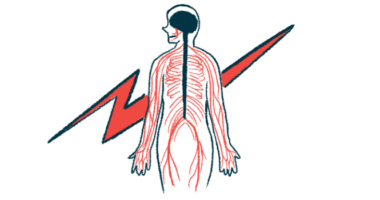Muscle MRI Scans May Help Check for Disease Progression, Study Says

MRI scans of pelvis and leg muscles may serve as a marker of progression and treatment response in people with hereditary transthyretin (ATTRv) amyloidosis, a group of conditions that also includes familial amyloid polyneuropathy (FAP), a small Italian study suggests.
The study, “Muscle MRI as a Useful Biomarker in Hereditary Transthyretin Amyloidosis: A Pilot Study,” was published in the journal Genes.
FAP is caused by inheritable mutations in the TTR gene. These mutations lead to the buildup of a misfolded version of a protein called transthyretin in multiple tissues, including muscles, interfering with their function.
Early diagnosis and availability of disease-modifying therapies have significantly changed disease management. However, reliable disease biomarkers that inform about disease progression, as well as treatment response, are vital.
Muscle MRI has been particularly useful as a biomarker of muscle function in patients with neuromuscular disorders.
Now, researchers at the Università Cattolica del Sacro Cuore in Italy evaluated the diagnostic potential of muscle MRI in a group of ATTRv patients.
They evaluated 10 patients — nine men and one woman, with a mean age at disease onset of 63.2 — and 10 gender- and age-matched participants (mean age of 66.8) with muscle pain but no evidence of neuromuscular disease, who served as controls.
All participants had MRI scans of the pelvis and legs. Scans were evaluated by two investigators with experience in muscle imaging and blinded to study participants, meaning they didn’t know to whom the scans belonged.
In total, 27 muscles were evaluated and given a score from zero to five. A score of zero indicated muscles had a normal appearance, while higher scores were associated with increasingly severe muscle abnormalities. Also, they calculated the “total fatty infiltration score” by adding the scores of pelvis, tight, and leg muscles.
Results showed that all ATTRv patients had abnormal muscles. The tensor fasciae latae, a thigh muscle, and the soleus muscle, a flat, broad muscle of the calf, were the more severely affected ones. The researchers found that 90% of the patients scored two or higher, indicative of moderate muscle impairment.
Researchers also found a significant positive correlation between the total fatty infiltration score and clinical parameters commonly used to assess disease severity in ATTRv patients, including the neuropathy impairment score (NIS) and the NIS-lower limbs (NIS-LL) score, as well as the Norfolk Quality of Life-Diabetic Neuropathy (QoL-DN) questionnaire to assess quality of life. A positive correlation means that an increase in fat infiltration was accompanied by higher scores on each of these parameters, corresponding to more severe disease impairments.
Fat infiltration correlated with lower scores in the Sudoscan test, a noninvasive test used to evaluate damage in peripheral nerves, or those found outside the brain and spinal cord. Lower scores on this test are indicative of more severe dysfunction.
Overall, this small analysis suggests that muscle MRI “could be considered as possible biomarker both for diagnostic purposes and for assessing the severity of the disease,” the researchers wrote.
“Our data suggest a future role of this technique in clinical trials for monitoring response to therapy,” they concluded.







